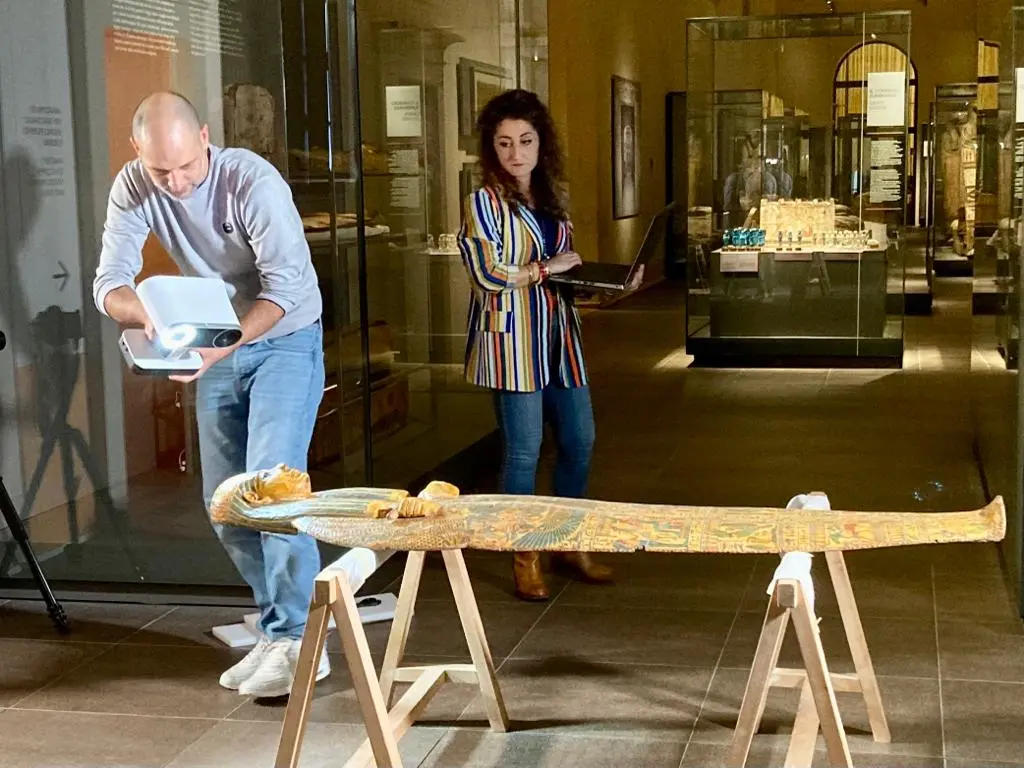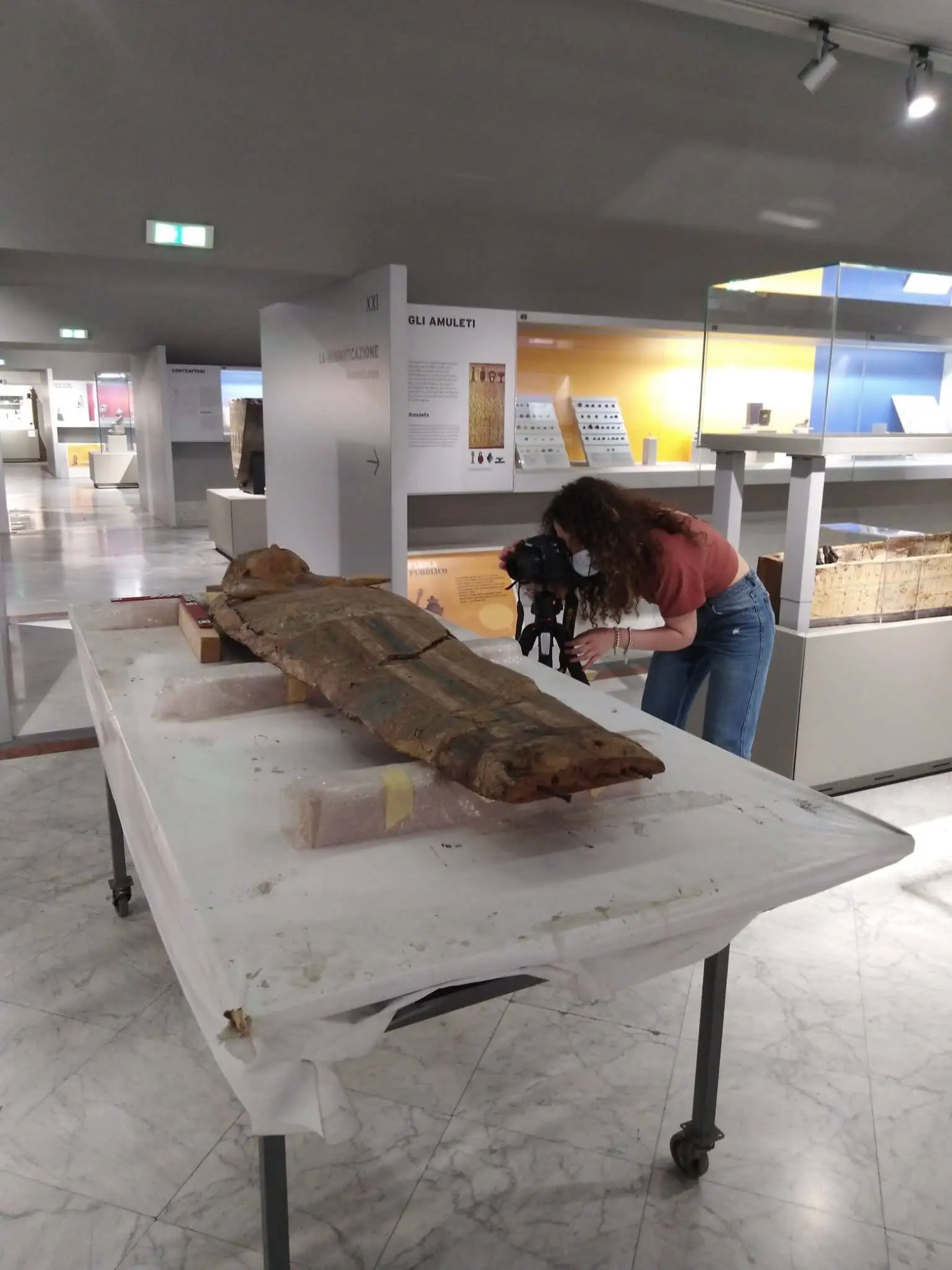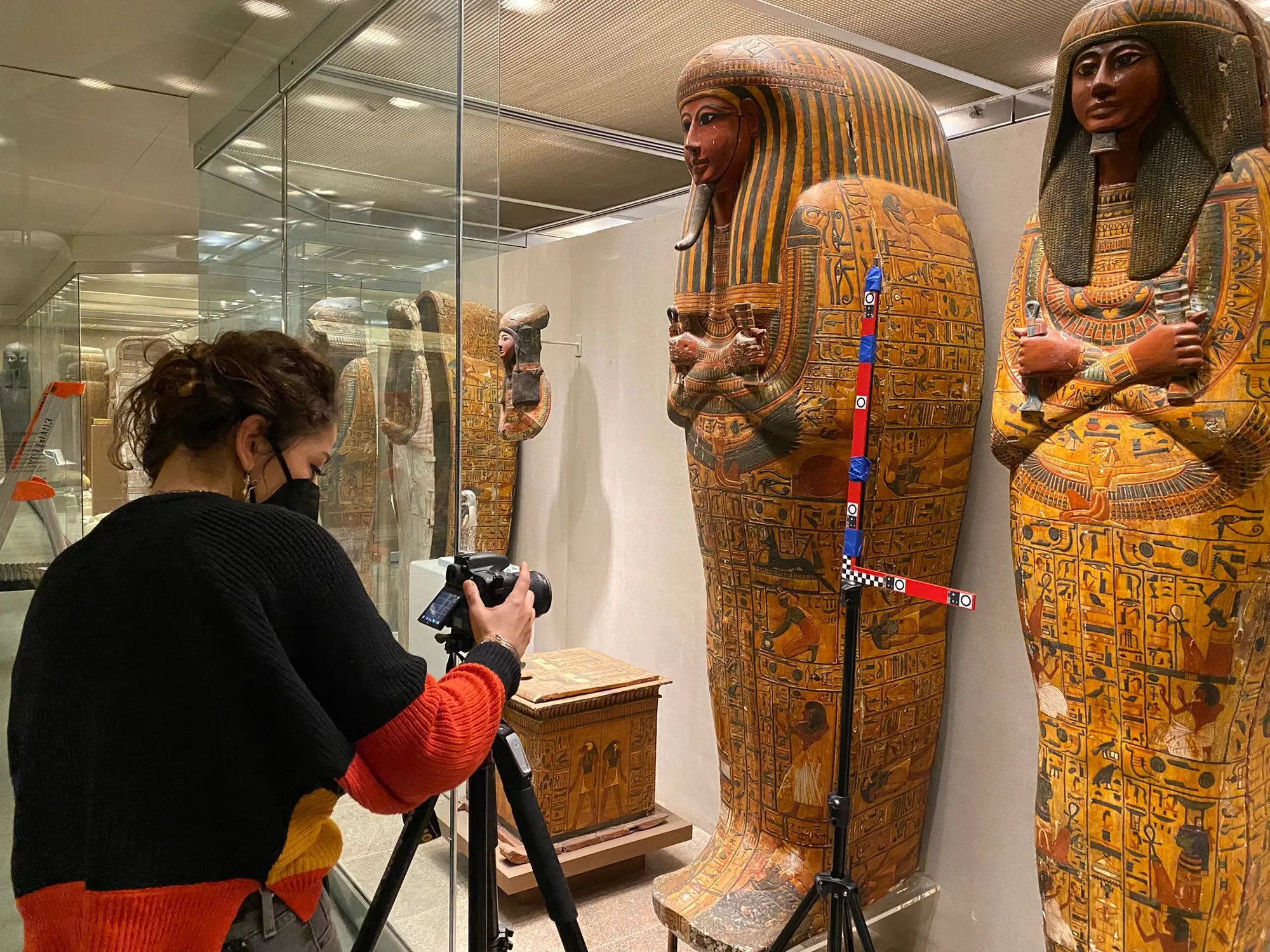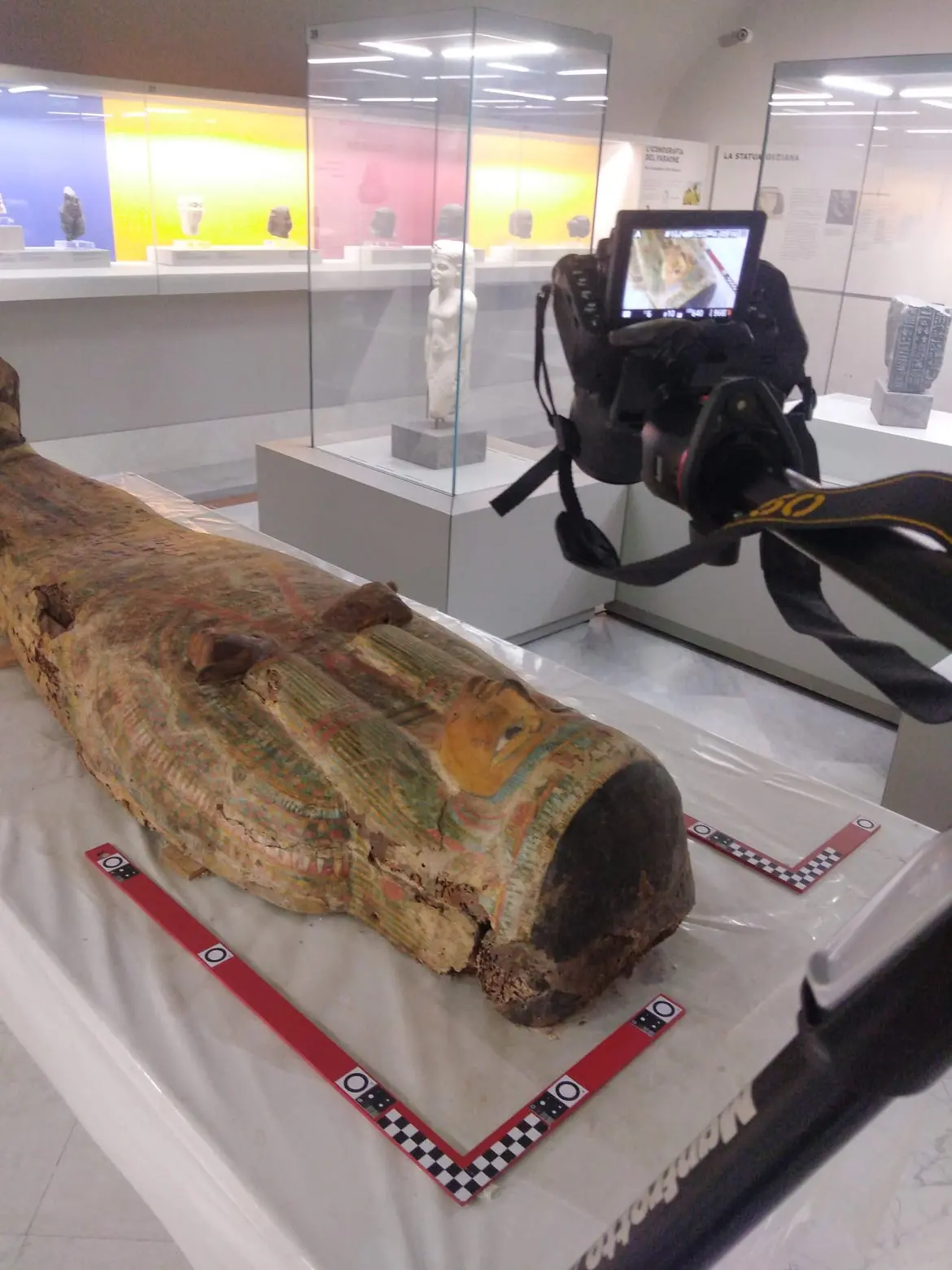Faces Revealed
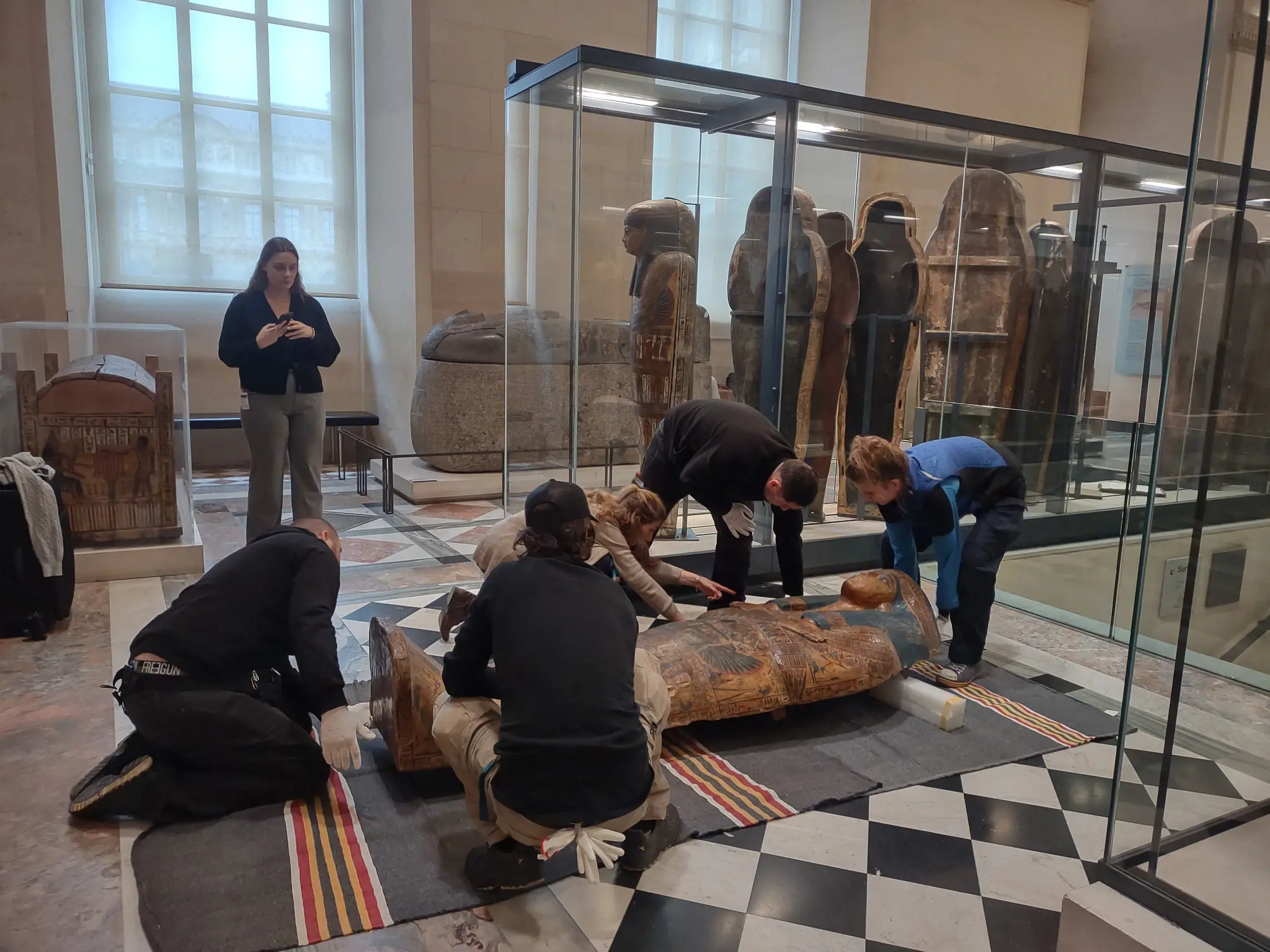
2021
Faces Revealed is a three-year research project (2021-2024) funded by the European Union Horizon 2020 research and innovation programme under the Marie Skłodowska-Curie grant agreement No 895130.
Started in 2021 in collaboration with the Egyptian Museum of Turin, the University of California, Los Angeles, the Polytechnic University of Milan and the Vatican Coffin Project, the Faces Revealed project aims to examine the faces of Egyptian sarcophagi through a new methodological approach based on the analysis of facial features and other elements of the sarcophagus itself. Investigations are conducted by the use of photogrammetry – a low-cost, fast, transportable and non-invasive solution – that can reveal surface details, which are difficult to discern in visible light, as they are mainly covered by painted film.
The methodology used in this project, in conjunction with more traditional approaches, allows for a more holistic study of sarcophagi, thus providing more information on their ancient manufacture and reuse. Analyses were carried out on a small group of artefacts, and the comparison between the textured and non-textured 3 D model shows that, in most cases, the faces were painted without following the sculpted outline of the faces below. This evidence has never been taken into consideration before and therefore raises several interesting questions. The sarcophagi considered in this project belong to the category “yellow coffins” from the 19th° to the beginning of the 22nd° dynasty, preserved in various museums around the world. The main objective is to understand whether the different physiognomic traits can be linked to different sarcophagi production workshops and, if so, whether they therefore reflect the stylistic characteristics of a specific period. Alongside the focus on production workshops, the painted masks will be compared with the masks worked in wood, to understand whether the painting reproduces the underlying morphological characteristics and whether a discrepancy between these can lead to possible reuse.
This approach makes the project particularly suitable for a multidisciplinary and interdisciplinary study in which new technologies will go hand in hand with traditional analytical methods and where the combination of different skills will ultimately allow a complete and in-depth analysis of the sarcophagi.
Teams
Stefania Mainieri (Principal Investigator); Christian Greco (Supervisor for the Beneficiary Institution (Egyptian Museum, Turin); Kathlyn (Kara) Cooney (Supervisor for the Host Institution NELC, UCLA); Corinna Rossi (Supervisor for the Secondment DABC – PoliMi); Alessandro Mandelli (Specialist Senior Technician for the Secondment DABC – PoliMi)
Partners Museum
Museo Egizio, Torino; Gregoriano Egizio, Musei Vaticani; Musée du Louvre, Paris; Rijksmuseum van Oudheden (RMO), Leiden; Metropolitan Museum of Art (MET), New York; Museo Archeologico Nazionale di Firenze – Sezione “Museo Egizio”; Museo Archeologico Nazionale di Napoli (MANN); Egyptian Museum Cairo (EMC); Los Angeles County Museum of Art (LACMA); The National Museum of Egyptian Civilization (NMEC), Cairo.
Collaborations
The Vatican Coffin Project; The Gate of the Priests Project; The APPEAR Project.
Link
Faces Revealed Museo Egizio
